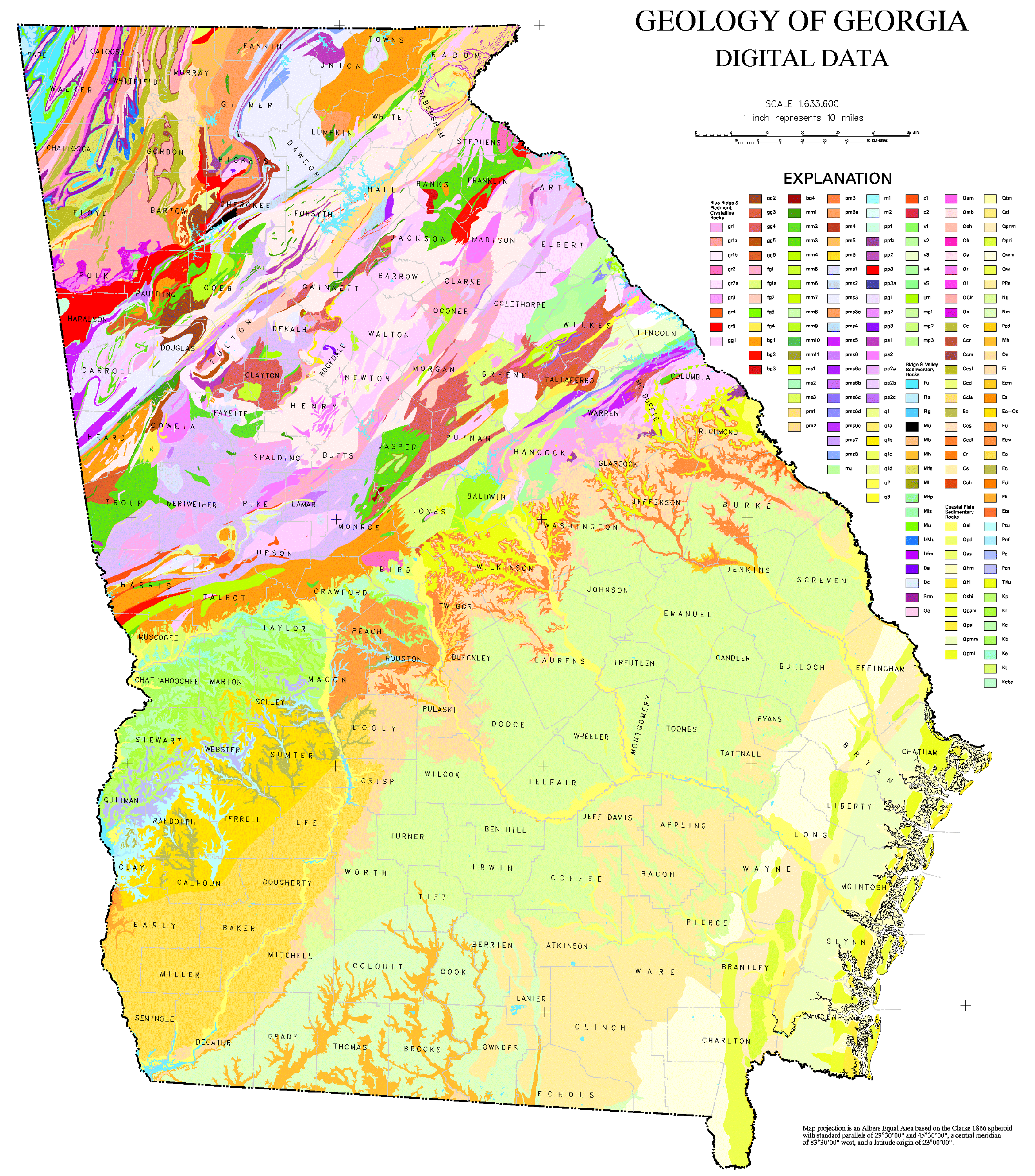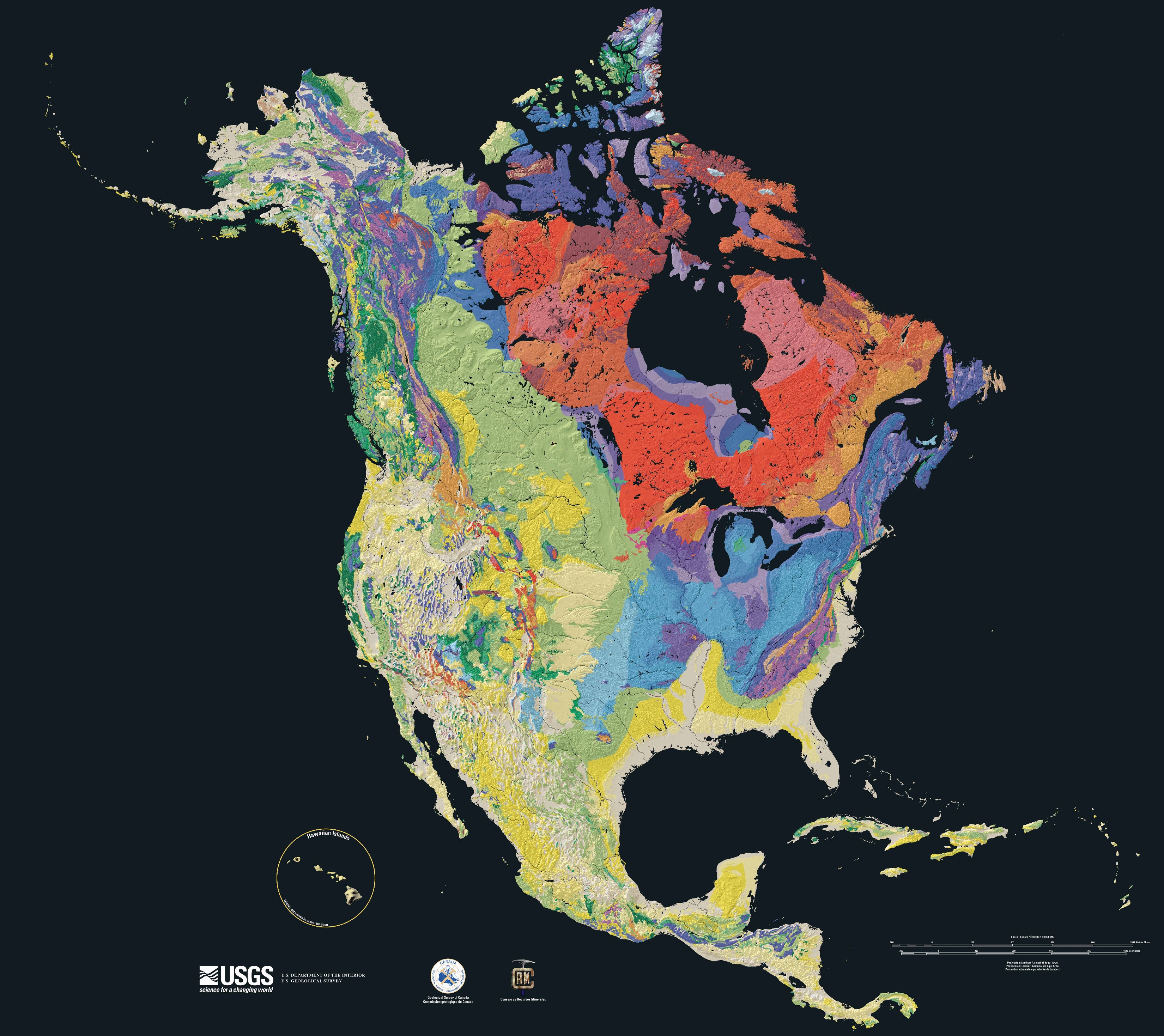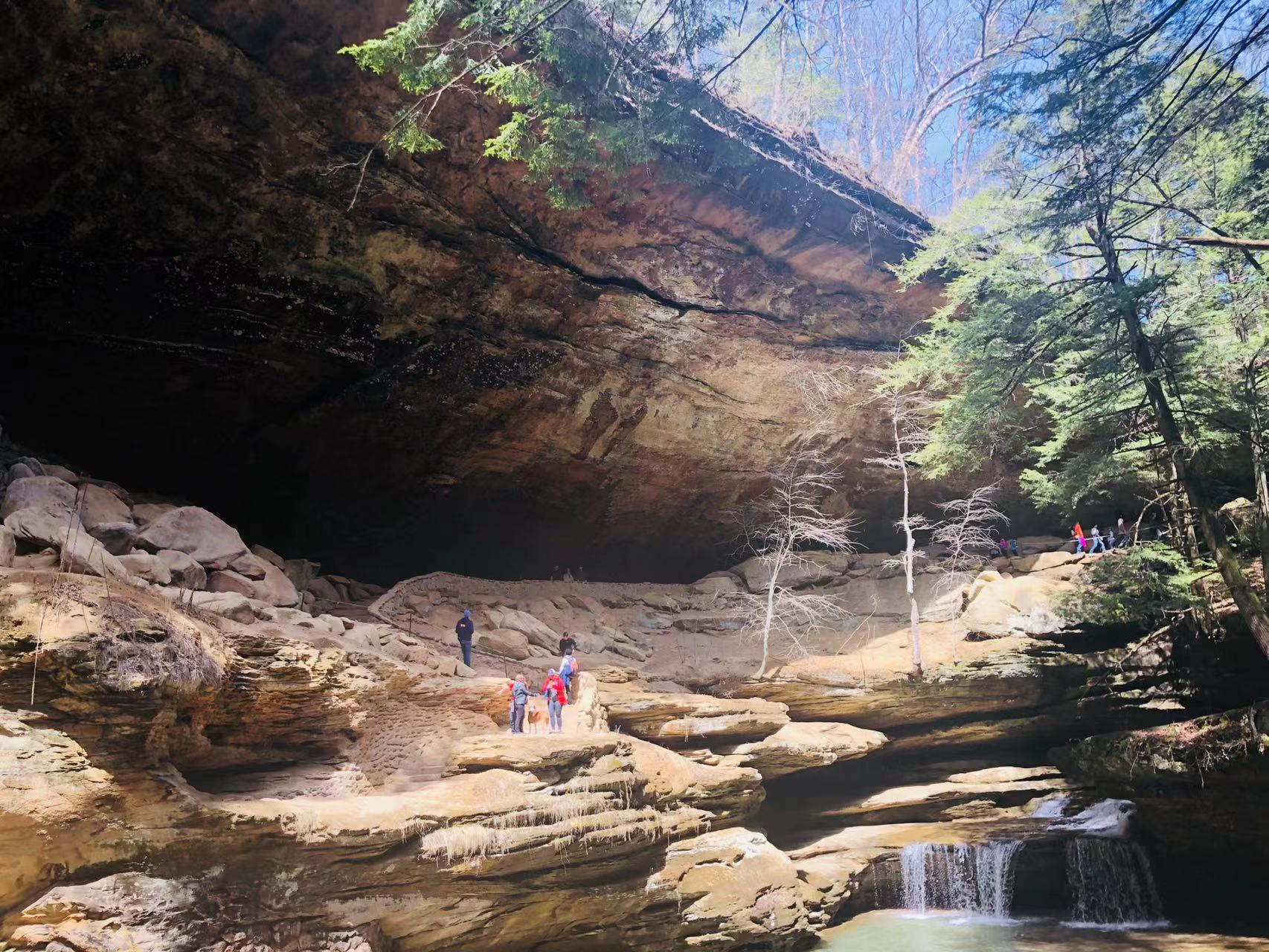|
Chorochromatic Map
A Chorochromatic map (), also known as an area-class, qualitative area, or mosaic map, is a type of thematic map that portray regions of categorical or nominal data using variations in color symbols. Chorochromatic maps are typically used to represent discrete fields, also known as categorical coverages. Chorochromatic maps differ from choropleth maps in that chorochromatic maps are mapped according to data-driven boundaries instead of trying to make the data fit within existing, sometimes arbitrary units such as political boundaries. History The chorochromatic map is one of the oldest types of thematic map, first appearing independently in several different fields. In 1741, Gottfried Hensel published '' Synopsis Universae Philologiae'', a book about world languages that included a set of maps of language regions, each with boundaries and colors for broad language families as he understood them. Other maps of cultural regions began to appear in the 19th Century. The first kn ... [...More Info...] [...Related Items...] OR: [Wikipedia] [Google] [Baidu] |
Geologic Map Of Georgia
Geologic mapping of Georgia is the creation of geologic maps, special-purpose maps made to show geological features, of the State of Georgia in the United States. Rock units or geologic strata are shown by colors or symbols to indicate where they are exposed at the surface. Structural features such as faults and shear zones are also shown. Since the first national geological map, in 1809, there have been numerous maps which included the geology of Georgia. The first Georgia-specific geologic map was created in 1825. The most recent state-produced geologic map of Georgia, by the Georgia Department of Natural Resources is 1:500,000 scale, and was created in 1976 by the department's Georgia Geological Survey. It was generated from a base map produced by the United States Geological Survey. The state geologist and Director of the Geological Survey of Georgia was Sam M. Pickering, Jr. Since 1976, several geological maps of Georgia, featuring the state's five distinct geologic regions, ... [...More Info...] [...Related Items...] OR: [Wikipedia] [Google] [Baidu] |
Geologic Map
A geologic map or geological map is a special-purpose map made to show various geological features. Rock units or geologic strata are shown by color or symbols. Bedding planes and structural features such as faults, folds, are shown with strike and dip or trend and plunge symbols which give three-dimensional orientations features. Stratigraphic contour lines may be used to illustrate the surface of a selected stratum illustrating the subsurface topographic trends of the strata. Isopach maps detail the variations in thickness of stratigraphic units. It is not always possible to properly show this when the strata are extremely fractured, mixed, in some discontinuities, or where they are otherwise disturbed. Symbols Lithologies Rock units are typically represented by colors. Instead of (or in addition to) colors, certain symbols can be used. Different geologic mapping agencies and authorities have different standards for the colors and symbols to be used for rocks of differ ... [...More Info...] [...Related Items...] OR: [Wikipedia] [Google] [Baidu] |
Hierarchy
A hierarchy (from Greek: , from , 'president of sacred rites') is an arrangement of items (objects, names, values, categories, etc.) that are represented as being "above", "below", or "at the same level as" one another. Hierarchy is an important concept in a wide variety of fields, such as architecture, philosophy, design, mathematics, computer science, organizational theory, systems theory, systematic biology, and the social sciences (especially political philosophy). A hierarchy can link entities either directly or indirectly, and either vertically or diagonally. The only direct links in a hierarchy, insofar as they are hierarchical, are to one's immediate superior or to one of one's subordinates, although a system that is largely hierarchical can also incorporate alternative hierarchies. Hierarchical links can extend "vertically" upwards or downwards via multiple links in the same direction, following a path. All parts of the hierarchy that are not linked vertically to one ano ... [...More Info...] [...Related Items...] OR: [Wikipedia] [Google] [Baidu] |
Quantitative Data
Quantitative research is a research strategy that focuses on quantifying the collection and analysis of data. It is formed from a deductive approach where emphasis is placed on the testing of theory, shaped by empiricist and positivist philosophies. Associated with the natural, applied, formal, and social sciences this research strategy promotes the objective empirical investigation of observable phenomena to test and understand relationships. This is done through a range of quantifying methods and techniques, reflecting on its broad utilization as a research strategy across differing academic disciplines. The objective of quantitative research is to develop and employ mathematical models, theories, and hypotheses pertaining to phenomena. The process of measurement is central to quantitative research because it provides the fundamental connection between empirical observation and mathematical expression of quantitative relationships. Quantitative data is any data that is in ... [...More Info...] [...Related Items...] OR: [Wikipedia] [Google] [Baidu] |
Tobler's First Law Of Geography
The First Law of Geography, according to Waldo Tobler, is "everything is related to everything else, but near things are more related than distant things." This first law is the foundation of the fundamental concepts of spatial dependence and spatial autocorrelation and is utilized specifically for the inverse distance weighting method for spatial interpolation and to support the regionalized variable theory for kriging. The first law of geography is the fundamental assumption used in all spatial analysis. Background Tobler first presented his seminal idea during a meeting of the International Geographical Union's Commission on Qualitative Methods held in 1969 and later published by him in 1970. Tobler was probably not extremely serious when he originally invoked the first law and instead was explaining limitations brought about by computers of the 1970s. He certainly did not think it would be as prominent in geography as it is today. Though simple in its presentation, this idea i ... [...More Info...] [...Related Items...] OR: [Wikipedia] [Google] [Baidu] |
State Park
State parks are parks or other protected areas managed at the sub-national level within those nations which use "state" as a political subdivision. State parks are typically established by a state to preserve a location on account of its natural beauty, historic interest, or recreational potential. There are state parks under the administration of the government of each U.S. state, some of the political divisions of Mexico#States, Mexican states, and in Brazil. The term is also used in the Australian states of template:state parks of Victoria, Victoria and state parks of New South Wales, New South Wales. The equivalent term used in Canada, Argentina, South Africa, and Belgium, is provincial park. Similar systems of local government maintained parks exist in other countries, but the terminology varies. State parks are thus similar to national parks, but under state rather than federal administration. Similarly, local government entities below state level may maintain parks, e.g., r ... [...More Info...] [...Related Items...] OR: [Wikipedia] [Google] [Baidu] |
National Park
A national park is a nature park, natural park in use for conservation (ethic), conservation purposes, created and protected by national governments. Often it is a reserve of natural, semi-natural, or developed land that a sovereign state declares or owns. Although individual nations designate their own national parks differently, there is a common idea: the conservation of 'wild nature' for posterity and as a symbol of national pride. The United States established the first "public park or pleasuring-ground for the benefit and enjoyment of the people", Yellowstone National Park, in 1872. Although Yellowstone was not officially termed a "national park" in its establishing law, it was always termed such in practice and is widely held to be the first and oldest national park in the world. However, the Tobago Main Ridge Forest Reserve (in what is now Trinidad and Tobago; established in 1776), and the area surrounding Bogd Khan Mountain, Bogd Khan Uul Mountain (Mongolia, 1778), wh ... [...More Info...] [...Related Items...] OR: [Wikipedia] [Google] [Baidu] |
Level Of Measurement
Level of measurement or scale of measure is a classification that describes the nature of information within the values assigned to variables. Psychologist Stanley Smith Stevens developed the best-known classification with four levels, or scales, of measurement: nominal, ordinal, interval, and ratio. This framework of distinguishing levels of measurement originated in psychology and is widely criticized by scholars in other disciplines. Other classifications include those by Mosteller and Tukey, and by Chrisman. Stevens's typology Overview Stevens proposed his typology in a 1946 ''Science'' article titled "On the theory of scales of measurement". In that article, Stevens claimed that all measurement in science was conducted using four different types of scales that he called "nominal", "ordinal", "interval", and "ratio", unifying both " qualitative" (which are described by his "nominal" type) and "quantitative" (to a different degree, all the rest of his scales). The conc ... [...More Info...] [...Related Items...] OR: [Wikipedia] [Google] [Baidu] |
Region
In geography, regions, otherwise referred to as zones, lands or territories, are areas that are broadly divided by physical characteristics (physical geography), human impact characteristics (human geography), and the interaction of humanity and the environment (environmental geography). Geographic regions and sub-regions are mostly described by their imprecisely defined, and sometimes transitory boundaries, except in human geography, where Jurisdiction (area), jurisdiction areas such as national borders are defined in law. Apart from the Earth, global continental regions, there are also hydrosphere, hydrospheric and atmosphere, atmospheric regions that cover the oceans, and discrete climates above the land mass, land and water mass, water masses of the planet. The land and water global regions are divided into subregions geographically bounded by large geological features that influence large-scale ecologies, such as plains and features. As a way of describing spatial areas, the ... [...More Info...] [...Related Items...] OR: [Wikipedia] [Google] [Baidu] |
Geographic Information Science
Geographic information science or geographical information science (GIScience or GISc) is the scientific discipline that studies geographic information, including how it represents phenomena in the real world, how it represents the way humans understand the world, and how it can be captured, organized, and analyzed. It can be contrasted with geographic information systems (GIS), which are the actual repositories of such data, the software tools for carrying out relevant tasks, and the profession of GIS users. That said, one of the major goals of GIScience is to find practical ways to improve GIS data, software, and professional practice. it is more focused on how gis is applied in real life British geographer Michael Goodchild defined this area in the 1990s and summarized its core interests, including spatial analysis, visualization, and the representation of uncertainty. GIScience is conceptually related to geomatics, information science, computer science, but it claims the sta ... [...More Info...] [...Related Items...] OR: [Wikipedia] [Google] [Baidu] |
Erwin Raisz
Erwin Raisz (1 March 1893, Lőcse, Hungary – 1 December 1968, Bangkok, Thailand) was a Hungarian-born American cartographer, best known for his physiographic maps of landforms. Early life and education Born in Lőcse, Hungary (now part of Slovakia) in 1893, Raisz was the son of a civil engineer who introduced him to maps through his work. He received his degree in civil engineering and architecture from the Budapest University of Technology and Economics (Royal Polytechnicum) in Budapest in 1914. Career Raisz served in the army during World War I, and emigrated to New York in 1923. He worked for the Ohman Map Company while studying for his 1929 Ph.D. at Columbia University. He offered a course in cartography while a student, one of the first such in the United States. In 1931 he joined the Institute of Geographical Exploration at Harvard University, where he taught cartography and was curator of the map collection for 20 years. He created a significant body of work using ... [...More Info...] [...Related Items...] OR: [Wikipedia] [Google] [Baidu] |
Chromolithography
Chromolithography is a method for making multi-colour prints. This type of colour printing stemmed from the process of lithography, and includes all types of lithography that are printed in colour. When chromolithography is used to reproduce photographs, the term photochrome is frequently used. Lithographers sought to find a way to print on flat surfaces with the use of chemicals instead of raised relief or recessed intaglio techniques."Chromolithography and the Posters of World War I." ''The War on the Walls''. Temple University. 11 April 2007. . A chromolithograph is also known as an oleograph. Chromolithography became the most successful of several methods of colour printing developed by the 19th century; other methods were developed by printers such as Jacob Christoph Le Blon, George Baxter and Edmund Evans, and mostly relied on using several woodblocks with the colours. Hand-colouring also remained important; elements of the official British Ordnance Survey maps were c ... [...More Info...] [...Related Items...] OR: [Wikipedia] [Google] [Baidu] |





.jpg)

